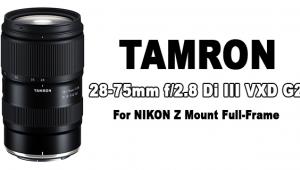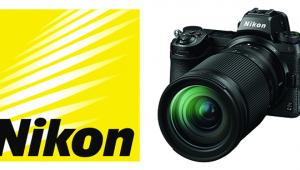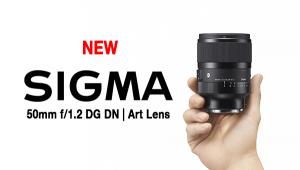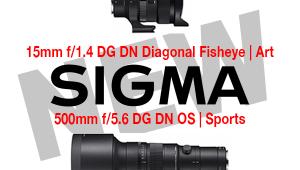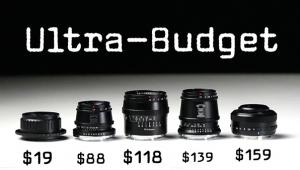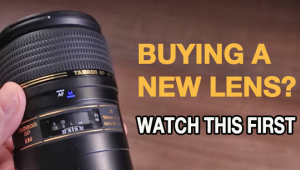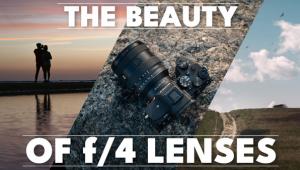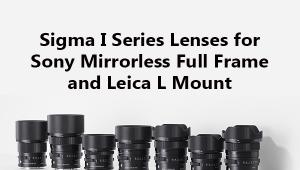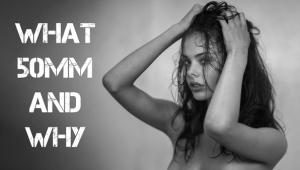What’s a “Normal” Lens? And Why Is My 18mm Lens “Equivalent” to a 28mm?

What’s normal? Not asking about your weird uncle Walter who puts mayonnaise on his French fries—and his spaghetti. When photography went digital, understanding focal lengths became much more difficult. Let’s unravel a few of the mysteries so that we can make better educated decisions about lenses.
When digital SLRs first appeared around the turn of the century (i.e., the fall of 2000) they had imaging sensors with smaller dimensions than their 35mm film based counterparts. In fact, the early runners, the Canon D30 and Nikon D1, both had sensors even smaller than today’s de facto standard APS-C size sensor.
The size of the imaging sensor determines the focal length that is mathematically “normal” or what is sometimes called “standard lens.” This focal length provides perspective that is very close to human vision.
By definition, the focal length equal to the diagonal of the imaging sensor is “normal.” Examining the geometry, 35mm film is 24mm × 36mm and has a diagonal of 43.2mm. (Those among you who remember Pythagoras can check my calculation on their slide rule.) Most early standard lenses for 35mm film cameras were 50mm. They still exist, and hot derivatives like Canon’s 40mm f/2.8 STM pancake lens and Tamron’s 45mm f/1.8 prime lens are great for modern full-frame DSLRs. The image below was shot with a Tamron 45mm on a Nikon D800.

For 35mm film cameras, or full-frame DSLRs, focal lengths longer than 43.2mm are considered telephoto; shorter focal lengths are labeled wideangle. And therein lies the rub. As sensor size decreases, normal focal length likewise decreases, and the focal length needed to be classified true wideangle becomes perilously low and much more expensive to manufacture.
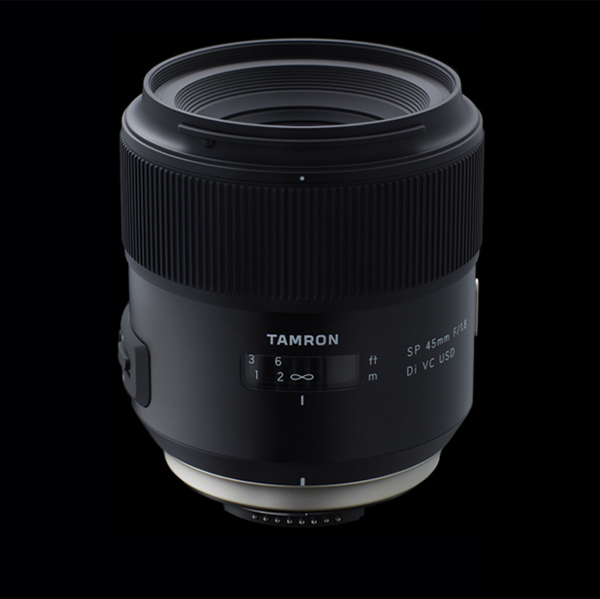
The chart below lists some popular focal lengths for 35mm film cameras in the left hand column. The approximate equivalent focal length for that lens when used on a current crop-frame Nikon or Canon DSLR is shown to the right. The numbers are different simply because Nikon and Canon DSLRs have sensors of different sizes, although both are approximately the size of an APS-C sensor and are often referred to as such.
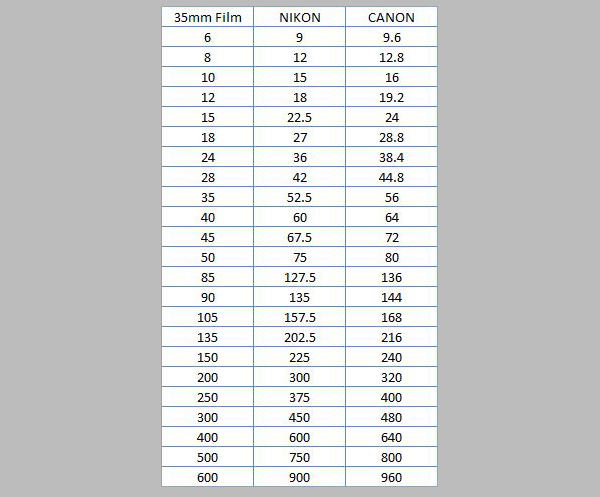 For you Micro 4/3rds shooters, the lens factor is 2X so a 50mm is equivalent to a 100mm, and so on.
For you Micro 4/3rds shooters, the lens factor is 2X so a 50mm is equivalent to a 100mm, and so on.
Note that a digital SLR requires a short 18mm focal length in order to reach a focal length that performs roughly equivalent to the way a 28mm wideangle lens performs on a 35mm film camera. That explains the 18-55mm “kit lens” that is packaged with many DSLRs. It has about the same zoom range as the 28-85mm zoom that was commonly sold with film cameras.
Clear enough? Then here’s a bit more complication. Lenses that can only cover an APS-C size sensor cannot be used properly on full-frame DSLRs. The image circle that they transmit to the sensor is simply too small. If you remember that the diagonal measurement of a 35mm-size sensor is 43.2mm it’s easy to understand that in order to cover it completely, corner-to-corner, the circle of light that passes through the lens must have a diameter of at least 43.2mm.
An APS-C size sensor measures 25.1mm × 16.7mm and consequently has a diagonal measurement of 30.1mm. That’s significantly smaller than the full-frame sensor’s diagonal (43.2mm). If you use this lens on a full-frame DSLR, the corners will be left unexposed and therefore appear very dark.
Turn this around, and what happens when you use a lens designed for a full-frame sensor (or 35mm film) on a camera outfitted with an APS-C size sensor? The sensor is covered fully by the light that is transmitted by the center portion of the lens. Theoretically, that part of the lens is freer of defects and aberrations. In most cases the results of using this combination are superior, all else being equal.
Let me stress that it’s not necessary to understand any of the physics in order to take great photographs. You already knew that. But part of the charm and allure of photography—for me, anyway—is how it mixes science and art. Understanding which focal length is normal for the camera you shoot is fundamental to anticipating what may happen when you use a different lens.
—Jon Sienkiewicz




